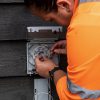Scotland Hand £25m 4G Mobile Infill Contract to WHP Telecoms
The Scottish Government’s recently announced plan to plough £25m into a 4G Infill Programme (here), which aims to improve rural mobile coverage (mostly across the ‘Highlands & Islands’ region) by building a network of new masts, has chosen WHP Telecoms to be its contract supplier.
As reported earlier this year, the project should eventually target “about 60 to 70 areas” and the “majority of the programme will focus on sites completely without coverage in the Highlands and Islands” region (i.e. remote rural areas). The rollout itself is expected to start toward the end of 2018 and will then run for 4 years until the end of 2022.
The fact that improving 4G coverage is the focus could also mean that more communities are able to access faster internet connections via Mobile Broadband technology, assuming the masts are given enough capacity and support by the various Mobile Network Operators (e.g. Three UK, Vodafone, O2 and EE). The scheme will also benefit the United Kingdom’s overall coverage targets for mobile (here).
Advertisement
Paul Wheelhouse, Scottish Connectivity Minister, said:
“As part of our Mobile Action Plan we have legislated to reduce planning controls making it easier for operators to deploy new or existing infrastructure, and we are considering further actions in this regard. Our Scottish 4G Infill Programme is a critical part of the Mobile Action Plan.”
The March 2018 announcement only vaguely revealed approximately 16 initial deployment locations, which were roughly marked out as dots on a map. At the time of writing the Scottish Government has yet to flesh out their exact deployment plan, although last year’s consultation document did provide some additional indication of where future masts might surface (see image at the bottom).
At this point it’s worth remembering just how difficult it can be to deploy new mobile infrastructure into remote rural areas. Problems are often caused by delays in securing planning permission (communities may protest), as well as the usual challenges with securing wayleave agreements via many different landowners and the difficulty of confirming where “not spots” actually exist (mobile coverage is variable).
Securing a good power supply and fibre optic capacity in remote areas can also be an expensive challenge.

Advertisement
Mark is a professional technology writer, IT consultant and computer engineer from Dorset (England), he also founded ISPreview in 1999 and enjoys analysing the latest telecoms and broadband developments. Find me on X (Twitter), Mastodon, Facebook, BlueSky, Threads.net and Linkedin.
« TalkTalk UK Investors Encouraged to Revolt After £200m Placing

















































Comments are closed